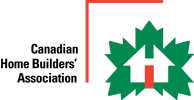Member Knowledge Centre
 member Knowledge centre
member Knowledge centre
The Knowledge Centre provides CHBA members with access to information and resources. It is a growing resource that is currently focused on updating members about national building code information. Please note that this information is a benefit of your membership, and should not be shared beyond your company/organization.
You can browse the items below, filter by category, or enter search terms in the "What are you looking for" box below.
Protecting Homes Against Wildfire

Protecting Homes Against Wildfire
August 1, 2025

Protecting Homes Against Wildfire
Forest fires and grassland fires are a significant concern in some Canadian regions and can lead to total loss of homes or neighborhoods or extreme damage, which is primarily due to:
- Embers & Sparks: Fire particles from a distance can blow onto the house, igniting material.
- Extreme Heat: Radiant heat can melt siding, ignite the house, and break windows.
- Direct Flame: Fire spreads directly to houses through a path of combustible objects.
In order to protect homes, properties and neighbourhoods, three zones have been defined as the Home Ignition Zone to help manage and reduce the spread of fire to the home.

What can be done to manage forest and grass land fires in each of the defined zones?
- Immediate Zone (0 1.5 m): Maintain a minimum 1.5-metre (5 feet) non-combustible surface around the entire home and decks.
- Intermediate Zone (1.5 10 m): Keep this area fire-resistant by removing all materials that could easily ignite from embers or radiant heat during a wildfire (e.g. wood piles, debris).
- Extended Zone (10 30 m): Thin and prune evergreen trees to reduce fuel loads. Regularly clear fallen branches and dry grass to minimize surface fuels and lower fire risk.
Homebuilders, renovators and developers can create more wildfire-resilient homes through:
- Installing Class A ignition-resistant roofing materials and avoiding the use of wood shingles.
- Ensuring roof flashing and soffits are non-combustible and sealing roof ridges properly.
- Selecting non-combustible or ignition-resistant cladding and avoiding vinyl or wood siding.
- Using metal vent covers (with holes no larger than 3 mm) and avoiding vents on gable ends.
- Installing metal rain gutters and downspouts with metal caps to prevent debris buildup.
- Selecting 30-minute, fire-rated exterior doors with non-combustible screen doors.
- Installing windows with heat-resistant tempered glass for enhanced protection.
How do I know if wildfire is a concern for my area?
Natural Resources Canada maintains a map depicting fire danger ratings across Canada, based on historical data from the year 2000 to the present. The map is being updated daily.
Where can I find more information?
Additional information can be found in the following documents: Protect Your Home from Wildfire, Wildfire-Resilience Best-Practice Checklist for Home Construction, Renovation and Landscaping, and the NRC National Guide for Wildland-Urban Interface Fires
Additional Info
Download File : Tech Essential Wildfire.pdf
